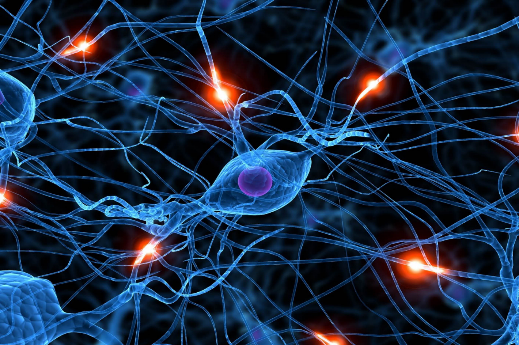Harnessing the Power of Pre-existing Knowledge – A Fantastic Voyage

Note: this blog article is taken from a unit of instruction from IACET's Train-the-trainer seminars titled "Instructional Design Principles for Adult Learning." Find out more about IACET's Train-the-trainer workshop.
Take a journey with me into the mind of an adult learner. As if we were a microbial sized  vehicle reminiscent of the one in 1966 movie Fantastic Voyage. As we journey through the body and enter the learner’s mind, we see a massive network of interconnected pathways all lit by electrical charges moving back and forth across the network. From your knowledge of the mind, you know that when these electrical charges are firing from one place to another, something is happening in the person’s mind and it could very well be learning.
vehicle reminiscent of the one in 1966 movie Fantastic Voyage. As we journey through the body and enter the learner’s mind, we see a massive network of interconnected pathways all lit by electrical charges moving back and forth across the network. From your knowledge of the mind, you know that when these electrical charges are firing from one place to another, something is happening in the person’s mind and it could very well be learning.
Your job while inside the mind is to teach the learner something new. That’s right, you have to take new knowledge and connect it to the networks that are already there. Being inside the mind, you are at an advantage, because you know you have to connect to the preexisting networks. No one learns anything without connecting it to something they already know.
To teach the learner something new, you pull out your microscopic jumper cables and start connecting a series of them to the learner’s preexisting networks, and then the miracle happens. You see your new knowledge traveling across the wires, which light up with activity. You have successfully integrated new knowledge into the learner’s preexisting network.
While this imaginary voyage may seem like science fiction, there has never been a better metaphor for how humans learn. So often as instructors, we enter a learner’s mind and try to give them information without connecting the cables to preexisting knowledge. Let me give you an example of what it is like for a learner to try to learn something new without connecting to preexisting knowledge. Read the following paragraph and see what you think it means:
(Note: take your time and don’t rush or the activity won’t work as well.)
“The procedure is quite simple. First, you arrange things into different groups and of course one stack  may be sufficient depending on how much there is to do. If you have to go somewhere else due to lack of facilities, that is the next step, otherwise, you are pretty well set. It is important not to overdo things. That is, it is better to do a few things at once instead of too many. In the short run, this may not seem important but complications can easily arise. A mistake can be expensive as well. After the procedure is completed, one will arrange the materials into different groups again and then they can be placed into their appropriate place. Then they can actually be used once more and the whole cycle will have to be repeated. However, that is a part of life.”
may be sufficient depending on how much there is to do. If you have to go somewhere else due to lack of facilities, that is the next step, otherwise, you are pretty well set. It is important not to overdo things. That is, it is better to do a few things at once instead of too many. In the short run, this may not seem important but complications can easily arise. A mistake can be expensive as well. After the procedure is completed, one will arrange the materials into different groups again and then they can be placed into their appropriate place. Then they can actually be used once more and the whole cycle will have to be repeated. However, that is a part of life.”
Did you get that? You may be asking yourself, what was that paragraph about, it made no sense! It didn’t make sense because we didn’t connect anything in it to preexisting knowledge. We failed to attach the jumper cables to the preexisting neural networks inside the mind.
So, how do we do that? Let’s now attach the jumper cables to the preexisting neural networks inside the learner’s mind and watch what happens. Here we go….THIS PARAGRAPH IS ABOUT WASHING CLOTHES. There, we did it. We have now connected new knowledge to preexisting knowledge. Now, re-read the paragraph above with the connections in place.
Doesn’t the paragraph make more sense now? You may be smiling saying, “that wasn’t so hard, why didn’t I think of it before?” The answer is simple; we hadn’t connected new knowledge to preexisting knowledge.
Good adult educators will make connections to preexisting knowledge every time they teach something new. Questions may abound about how to do this practically in a classroom. Or, how does an instructional designer make these connections in a distance learning environment? These are all concepts we teach in our new exciting two-day program Instructional Design Principles for Adult Learning.
Find out more at iacet.org/adultLearning
About the Author:

Joe McClary, Ed.S., CAE, is the Chief Executive Officer of the International Association of Continuing Education and Training (IACET). He is also a former education consultant, college instructor, high school and adult learning instructor with extensive experience with educational standards, regulation, technology, and course delivery.
Source:
Paragraph on washing clothes was adapted by a presentation from Dr. John Medina, Author of Brain Rules.
Fleischer, R. (Director) (1966). (n.d.). Fantastic Voyage. Retrieved from http://www.imdb.com/title/tt0060397/
